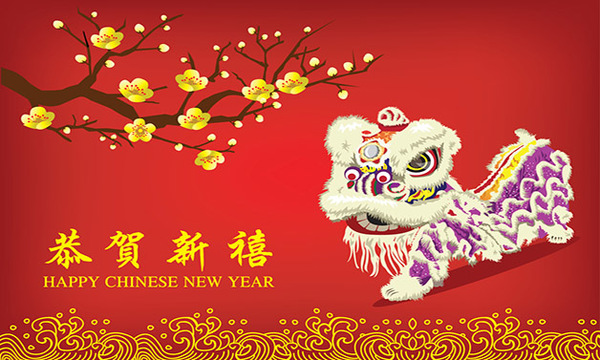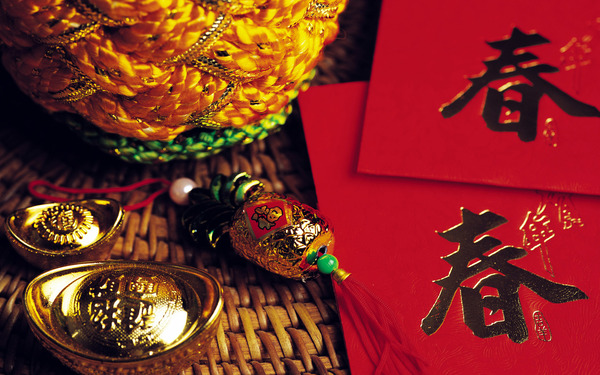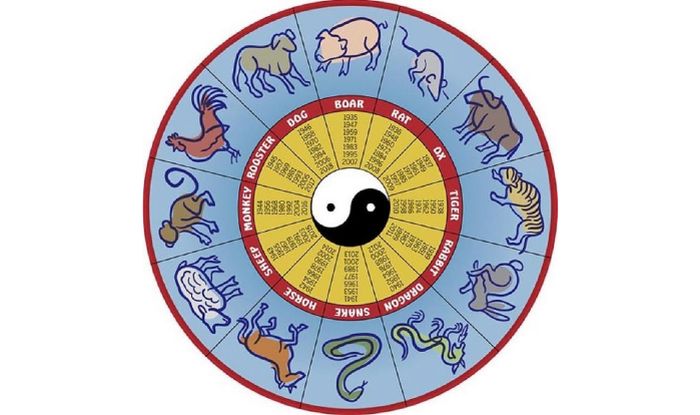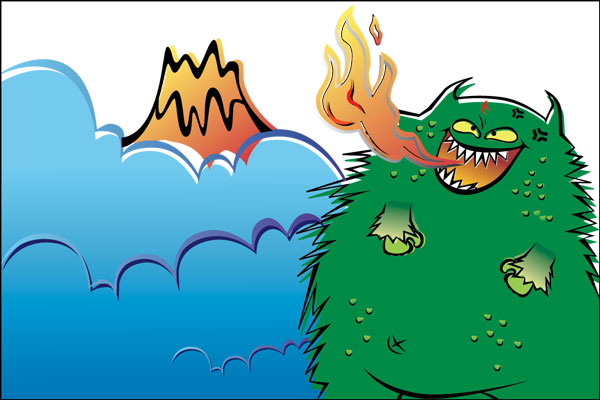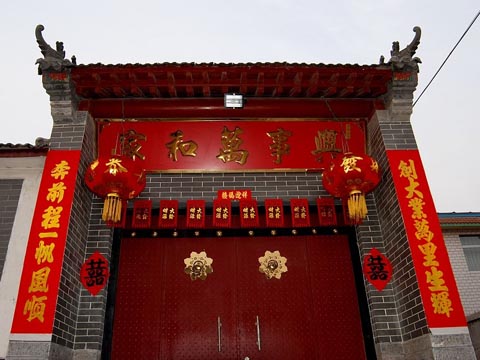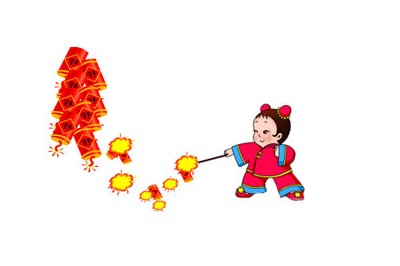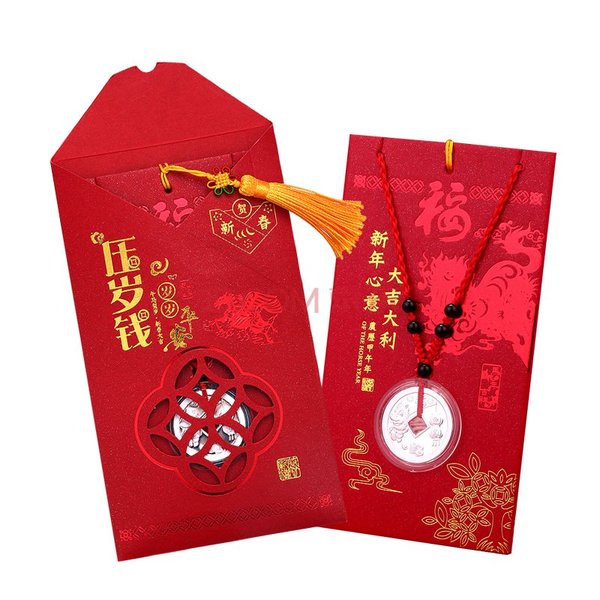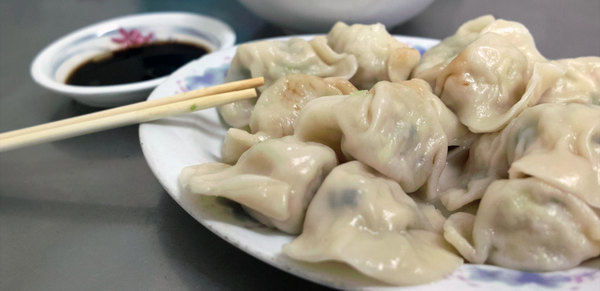话说,身在海外的华人每到过年时都份外想念国内的亲人。同时,对于在国外长大的中国娃们,一定要给他们介绍一下中国的传统文化。家长们可能也会被孩子的学校邀请去介绍一下中国春节。下面羽西就把从网上找到的资料给大家整理一下,希望对大家有用。
什么是春节(Chinese New Year)
中国新年有另一个名称,叫春节。传统名称为新年、大年、新岁,但口头上又称度岁、庆新岁、过年。因为中国年历的一年分有24个节气,而每一年的开始,都在立春前后,意寓春天开始的日子。春天开始,万物复苏,所以人们管它叫春节。中国人过春节已有4000多年的历史。在现代,人们把春节定于农历正月初一,但一般至少要到正月十五(上元节)新年才算结束,在民间,传统意义上的春节是指从腊月的腊祭或腊月二十三或二十四的祭灶,一直到正月十九。
Chinese New Year is the longest and most important festival in China. It is also known as the ‘Spring Festival’ - a holiday celebrating the beginning of a New Year, every year starts from the spring, hence we call it Spring Festival. Every year, the date of Spring Festival would be on a different date comparing to the last one. For 2017, the Spring Festival is on 28 January.
关于生肖(Chinese Zodiac)
说到中国新年,就必须要说一说生肖了。关于生肖来源的传说有很多不同版本,下面给大家介绍一个广为接受的版本:很久很久以前,有一天,人们说:“我们要选十二种动物作为人的生肖,一年一种动物。”天下的动物有多少呀?怎么个选法呢?这样吧,定好一个日子,这一天,动物们来报名,就选先到的十二种动物为十二生肖。 猫和老鼠是邻居,又是好朋友,它们都想去报名。猫说:“咱们得一早起来去报名,可是我爱睡懒觉,怎么办呢?”老鼠说:“别着急,别着急,你尽管睡你的大觉,我一醒来,就去叫你,咱们一块儿去。”猫听了很高兴,说:“你真是我的好朋友,谢谢你了。”
到了报名那天早晨,老鼠早就醒来了,可是它光想到自己的事,把好朋友猫的事给忘了。就自己去报名了。 结果,老鼠被选上了。猫呢?猫因为睡懒觉,起床太迟了,等它赶到时,十二种动物已被选定了。 猫没有被选上,就生老鼠的气,怪老鼠没有叫它,从这以后,猫见了老鼠就要吃它,老鼠就只好拼命地逃。 现在还是这样。
你知道哪十二生肖吗?
它们是:老鼠、牛、老虎、兔子、龙、蛇、马、羊、猴、鸡、狗、猪。
怎么让小小的老鼠排在第一名呢?这里也有个故事。 报名那天,老鼠起得很早,牛也起得很早。它们在路上碰到了。牛个头大,迈的步子也大,老鼠个头小,迈得步子也小,老鼠跑得上气不接下气,才刚刚跟上牛。老鼠心里想:路还远着呢,我快跑不动了,这可怎么办?它脑子一动,想出个主意来,就对牛说:“牛哥哥,牛哥哥,我来给你唱个歌。”牛说:“好啊,你唱吧---咦,你怎么不唱呀?”老鼠说:“我在唱哩,你怎么没听见?哦,我的嗓们太细了,你没听见。这样吧,让我骑在你的脖子上,唱起歌来,你就听见了。”牛说:“行罗,行罗!”老鼠就沿着牛腿子一直爬上了牛脖子,让牛驮着它走,可舒服了。它摇头晃脑的,真的唱起歌来: 牛哥哥,牛哥哥,过小河,爬山坡,驾,驾,快点儿罗!牛一听,乐了,撒开四条腿使劲跑,跑到报名的地方一看,谁也没来,高兴得昂昂地叫起来:“我是第一名,我是第一名!”牛还没吧话说完,老鼠从牛脖子上一蹦,蹦到地上,吱溜一蹿,蹿到牛前面去了。结果是老鼠得了第一名,牛得了第二名,所以,在十二生肖里,小小的老鼠给排在最前面了。
关于12生肖故事的英文版:
There is an interesting folktale about how the order of the 12 animals was determined. Once upon a time, the 12 animals quarreled about the order of the cycle. Because every one wanted to take the lead, no decision was made. Finally the animals agreed to ask Jade Emperor, the ruler of all gods in Chinese mythology, to decide the order. Jade Emperor decreed to hold a competition. The animals would run across a river, and each animal’s position in the cycle would be set by its place in the race.
At that time the cat and the rat were very close friends. The cat wanted to take up a position in the cycle, but he was a sleepy head. So the cat told the rat to wake him up the next morning. The rat promised to do so, but the next morning he was so excited about the competition that he forgot to wake up the cat.
All the other animals gathered at the bank of a river, and the race began. The rat jumped into the ox’s ear without being noticed. Just as the ox was about to reach the opposite side of the river, the rat jumped out of his ear, won the race and became the lead sign of the cycle. The ox became the second, and the others also reached the bank one after another. The pig, lazy and slow, ended up last. The cat didn’t wake up until the race was over, but it was too late, and he was not able to make it in the cycle. From then on, the cat and the rat became enemies. The cat hates the rat so much that every time they meet, the cat would chase and try to kill the rat.
年的故事 (The story of NIAN)
守岁,就是在旧年的最后一天夜里不睡觉,熬夜迎接新一年的到来的习俗,也叫除夕守岁,俗名“熬年”。探究这个习俗的来历,在民间流传着一个有趣的故事: 太古时期,有一种凶猛的怪兽,散居在深山密林中,人们管它们叫“年”。它的形貌狰狞,生性凶残,专食飞禽走兽、鳞介虫豸,一天换一种口味,从磕头虫一直吃到大活人,让人谈“年”色变。后来,人们慢慢掌握了“年”的活动规律,它是每隔三百六十五天窜到人群聚居的地方尝一次口鲜,而且出没的时间都是在天黑以后,等到鸡鸣破晓,它们便返回山林中去了。 算准了“年”肆虐的日期,百姓们便把这可怕的一夜视为关口,称作“年关”,并且想出了一整套过年关的办法:每到这一天晚上,每家每户都提前做好晚饭,熄火净灶,再把鸡圈牛栏全部拴牢,把宅院的前后门都封住,躲在屋里吃“年夜饭”,由于这顿晚餐具有凶吉未卜的意味,所以置办得很丰盛,除了要全家老小围在一起用餐表示和睦团圆外,还须在吃饭前先供祭祖先,祈求祖先的神灵保佑,平安地度过这一夜,吃过晚饭后,谁都不敢睡觉,挤坐在一起闲聊壮胆。就逐渐形成了除夕熬年守岁的习惯。
There are many legends that are part of the Chinese culture. Many of them exemplify moral lessons, not so different from Aesop and his fables. One story in particular is the story of Chinese New Years.
Long ago in the mountains, there lived a horrible demon creature named Nian. Every year, on the first day of the year, the creature would awaken and descend upon the village. He would eat all the grain and livestock. And if there were any unfortunately children stuck outside, they would disappear.
The villagers lived in fear of this beast and boarded up their houses on this night to protect their families. One year, right before this event was to occur, an old man visited the village. He turned to the villagers and asked, “Why do you fear this creature such? You are many and he is but one. Surely he could not swallow all of you.”
But the villagers remained skeptical and locked themselves up anyway. That night, Nian did not come. The old man had ridden him until dawn and the creature went back to its cave hungry. This went on for several nights until the old man revealed, “I cannot protect you forever.”
He turned out to be a god and had to return to his duties elsewhere. The villagers were terrified that once the old man left, they would once again see Nian return.
So the old man informed them, “The beast is easily scared. He does not like the color red. He fears loud noises and strange creatures. So tonight, spread red across the village. Hang red signs on every door. Make loud noises with drums, music, and fireworks. And to protect your children, give them face masks and lanterns to protect them.”
The villagers did as the old man instructed and Nian never returned again.
In Chinese, the word for New Years is Guo Nian. Literally translated it means to “pass over Nian” or “overcome Nian”. That is exactly what the villagers did.
It has become a tradition that part of New Year’s celebration is to hang lots of red decoration in your house. Streets are filled with music, loud drums, and fireworks all day long. And special paper lanterns are made in a variety of shapes and sizes, paraded through the streets to scare off any demons that might come.
Thus ends the story of Chinese New Years or Guo Nian.
春节时做什么?What Chinese people do in the New Year?
春联(Spring Festival Couplets)
春联也作门联、福贴,粤语地区称挥春,台语称春仔,是一种在新春和立春时使用的传统装饰物,把贺年的吉利字词用漂亮的书法,写在纸上而成,一般是贴在墙、门之上,在华人社会、朝鲜半岛和越南,每逢过年人们都会贴春贴,以增加节日的喜庆气氛。其中写成对联的又叫春联,但有些地区“春联”也是各种春贴的统称,而有些地区又把条状、不成对的春贴称为春条。传统春贴是由人手以毛笔书写,但现在亦有机器印制的春贴。春联的种类较多,有街门对、屋门对等,春联多有横批。
“The Spring Couplet”, also called “couplet” and “a pair of antithetical phrases”, is a special form of literature in China. The Spring Couplet is composed of two antithetical sentences on both sides of the door and a horizontal scroll bearing an inscription, usually an auspicious phrase, above the gate. The sentence pasting on the right side of the door is called the first line of the couplet and the one on the left the second line. On the eve of the Spring Festival, every household will paste on doors a spring couplet written on red paper to give a happy and prosperous atmosphere of the Festival. In the past, the Chinese usually wrote their own spring couplet with a brush or asked others to do for them, while nowadays, it is common for people to buy the printed spring couplet in the market.
鞭炮 (Fire Cracker)
A firecracker (cracker, noise maker, banger, or bunger) is a small explosive device primarily designed to produce a large amount of noise, especially in the form of a loud bang; any visual effect is incidental to this goal. They have fuses, and are wrapped in a heavy paper casing to contain the explosive compound.
压岁钱(Lucky Money)
关于压岁钱,有一个流传很广的故事。古时候,有一种小妖叫“祟”,大年三十晚上出来用手去摸熟睡着的孩子的头,孩子往往吓得哭起来,接着头疼发热,变成傻子。因此,家家都在这天亮着灯坐着不睡,叫做“守祟”。 有一家夫妻俩老年得子,视为心肝宝贝。到了年三十夜晚,他们怕“祟”来害孩子,就拿出八枚铜钱同孩子玩。孩子玩累了睡着了,他们就把八枚铜钱用红纸包着放在孩子的枕头下边,夫妻俩不敢合眼。半夜里一阵阴风吹开房门,吹灭了灯火,“祟”刚伸手去摸孩子的头,枕头边就迸发道道闪光,吓得“祟”逃跑了。第二天,夫妻俩把用红纸包八枚铜钱吓退“祟”的事告诉了大家,以后大家学着做,孩子就太平无事了。 原来八枚铜钱是八仙变的,暗中来保护孩子的。因为“祟”与“岁”谐音,之后逐渐演变为“压岁钱”。到了明清,“以彩绳穿钱编为龙形,谓之压岁钱。尊长之赐小儿者,亦谓压岁钱”。所以一些地方把给孩子压岁钱叫“串钱”。到了近代则演变为红纸包一百文铜钱赐给晚辈,寓意“长命百岁”。对已成年的晚辈红纸包里则放一枚银元,寓意“一本万利”。货币改为纸币后,长辈们喜欢到银行兑换票面号码相连的新钞票给孩子,祝愿孩子“连连高升”。
During the Chinese New Year period, the married or the elderly give red envelopes to children or unmarried juniors. A red envelope is also called yasui qian (“suppressing Sui money”).
According to legend, on New Year’s Eve, besides the monster Nian, there was a demon named Sui that came out to terrify children while they were asleep.
It was said that the children who were touched by the demon would be too scared to cry out loud, and got a terrible fever and even became mentally unstable. To keep children safe from being harmed by Sui, parents would light candles and stay up for the whole night.
On one New Year’s Eve, in an official’s family household, the parents gave their child eight coins to play with in order to keep him awake, so as to avoid him being hurt by the demon. The child wrapped the coins in red paper, opened the packet, rewrapped it, and reopened it until he was too tired to fall asleep. Then the parents placed the packet with eight coins under his pillow.
When Sui tried to touch his head, the eight coins emitted a strong light and scared the demon away. The eight coins turned out to be eight fairies. From then on, giving red envelopes became a way to keep children safe and bring good luck.
春节吃什么?Traditional food in Chinese New Year
年夜饭是传统中一个家庭最重要的一顿晚餐。每一个家庭成员,无论有多忙,在这一天,都要赶回家,与家人一起吃一顿年夜饭。那么年夜饭一般吃什么呢?
饺子(Chinese dumpling)
俗话说,好吃不过饺子。在中国北方,过年家家都要包饺子。那么饺子又有一个什么故事呢?
相传东汉末年,“医圣”张仲景曾任长沙太守,不久瘟疫流行,后辞官回乡。正值数九隆冬,他看见南洋的老百姓饥寒交迫,两只耳朵冻伤,病死的人很多。便在当地搭了一个医棚,支起一面大锅,他把羊肉、辣椒和去寒的药材放在锅里,熬到火候时再把羊肉和药材捞出来切碎,用面皮包成耳朵形状,煮熟之后连汤带食赠送给穷人。老百姓从冬至吃到除夕,抵御了伤寒,治好了冻耳。从此乡里人与后人就模仿制作,称之为“饺耳”。
从此以后,每到冬至,人们就模仿张大夫做饺耳的办法,做起了食品。因叫着别嘴,后来人们就叫它“饺子”了,也有一些地方称“扁食”或“烫面饺”。天长日久,形成了习俗,每到冬至这天,家家都吃饺子。1400多年的历史让饺子在老百姓心目中扎下了根。饺子渐渐成为中国饮食的代言词。
Chinese dumplings begins with Zhang Zhongjing, the man from Chinese history known as the “Medicine Saint.”
Zhang Zhongjing lived during the Eastern Han Dynasty 1800 years ago. Reportedly, Zhang noticed that many people’s ears were frostbitten when he returned to his hometown one winter. He decided to wrap mutton, chilli and some warming medicinal herbs in dough skin. Folding them into the shape of an ear, he boiled them in water before giving them to the poor.
Wang Lingxiang, doctor, said, “All the materials used in Zhang’s recipe could help warm the body, promote the blood flow and then thaw the cold ears. The dumplings also had a wonderful taste so they were well received by the people.”
This food was originally called “Jiao’er” for its shape, and later the name slowly became Jiaozi. Zhang used to distribute them from the day of Winter Solstice to New Year’s Eve, when the villagers had fully recovered from their illness.
Today, Jiaozi is still a must in winter in most parts of northern China, especially during the Spring Festival. No words can precisely describe Chinese people’s affection for dumplings, as the food has already become a symbol of home and warmth.
好了,就给大家总结到这里,如果觉得有用的话别忘了分享到朋友圈喔。。。
未经授权,严禁转载。
羽西欢迎大家投稿分享英国生活,邮件:[email protected]
如果您觉得我的文章对您有所帮助,愿意请我喝杯咖啡:
BTC: 13awm2DNctX647QHH2zJHUEr5vQz3mK1hE
ETH: 0xfFAE39dA418bfa94018C00A4A5eb6A8ddc6Bcf5c
